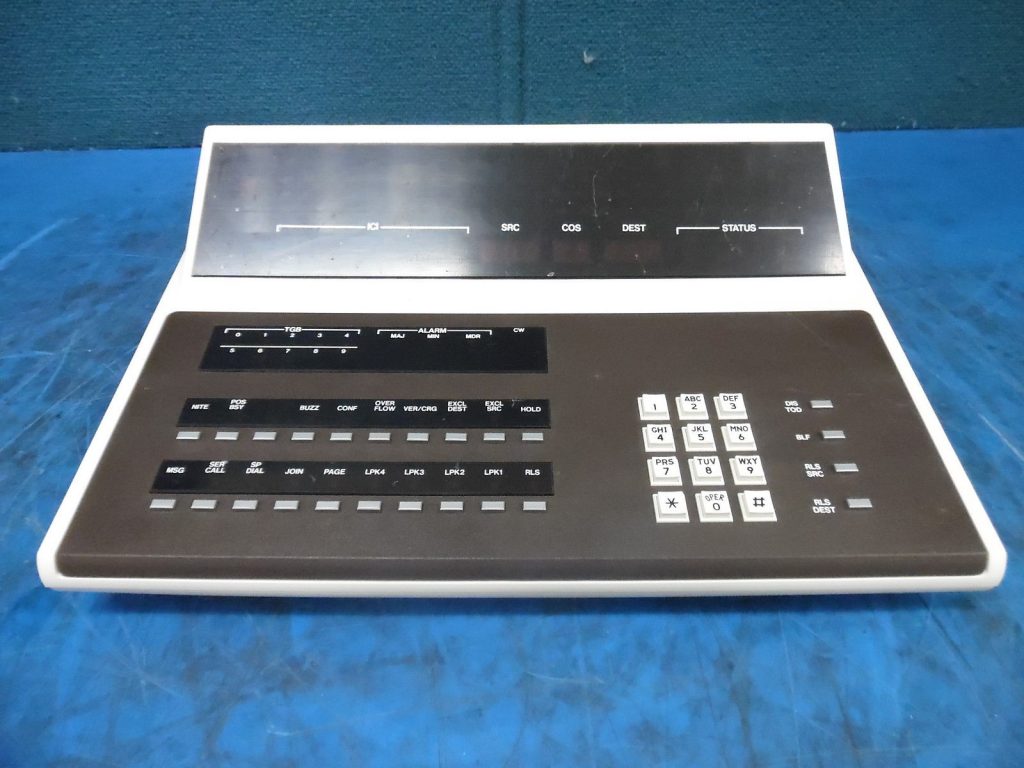Jason, the guest writer on Avaya’s SIP agenda, has kindly given me some stuff to post while I’m out of the office at the Museum of Telephony.
A Better Way
The other company I worked for was a five station cluster. There were 5 on-air studios and 3 production studios. Unlike the other station, it was possible to record production in either an on-air studio or a production studio. The main PBX was a Toshiba Strata which served the office staff, but not the on-air callers. (News Talk excepted, see below).
The philosophy at this company was that each station would have a hotline which consisted of one or more lines in hunting independent of the PBX. The busier stations were equipped with a Telos One-x-Six which provided line appearances for up to six lines. It had a single hybrid, which could choose any of the six lines at will. The one disadvantage of this system is that in most studios there was no way to screen callers with a handset if you were on the air. I later found out that the One-x-Six could support a screener telephone on the second row if that was desired, but was not configured that way in most studios.
Compared to the Symetrix, the One-X-Six sounded wonderful. Answering the phone was as easy as punching the blinking line button, and you could press it again to “lock” to avoid accidentally hanging up on the caller. If you wanted to conference multiple callers, you could simply “lock” the first line, grab the second line, and when you “locked” it, it would conference them together with the host. The “Next” button was indispensable for “Be the 10th caller” contests as it would automatically hang up the active line and answer the line that had been ringing the longest. You’d typically hear, “Hi you’re caller number 2; Hi you’re caller 3, Hi you’re caller number 4, …. Hi, you’re the tenth caller! Here’s what you won”. The One-X-Six also provided hold music locally to the unit, so it was easy to play the appropriate station’s content depending on the station the caller called. Ring alerting was done via an external ring/flash unit.
The News Talk station was built about 10 years after the other stations, so the telephony was handled a little differently on that station. Since the office system was fed with a PRI, it made sense to burn some of those channels for the News Talk which needed more lines than any other station in the cluster. Calls would arrive on the Strata and would simultaneously ring the key telephones in both studios, as well as the analog lines on the One-X-Six, which were SLT’s off the Strata. During normal operation, the screener in the production studio would screen the call on the bottom set of buttons on the One-X-Six and signal the on-air host which line was relevant. He would then hit the corresponding button on the top row and put the caller on air.
You can see a One-X-Six in action

https://www.youtube.com/watch?v=0bna5-yTEgk?t=246
If by some chance a caller called the office and needed to be put on-air, the office staff would transfer the call to the key telephone in the studio, then the host could hit “Transfer to Hybrid” and it would ring the Hybrid to arrive on-air. The other studios would require the caller to hang up and dial the “hotline”.
Ring muting was still accomplished the old fashioned way by physically disconnecting the speaker in the key telephone, but the flasher still alerted an incoming call if the mic was on-air.
For special broadcasts, the cluster was also equipped with a Comrex Matrix codec. Unlike the Hybrids, this system required a specialized unit in the field as well as in the studio. The codec would dial the studio and a “modem” would auto-answer. The Comrex pair would then negotiate an acceptable audio compression based on the quality of the phone lines. Think of it like VOIP, over a dedicated dial up connection. If a suitable connection could not be established, the field unit could fall back and call the studio as a standard POTS call and act as a hybrid. In the later years we used this unit for baseball broadcasts and the quality was nearly as good as a Marti RPU (one way microwave audio link), but had the advantage of two way audio.
*

